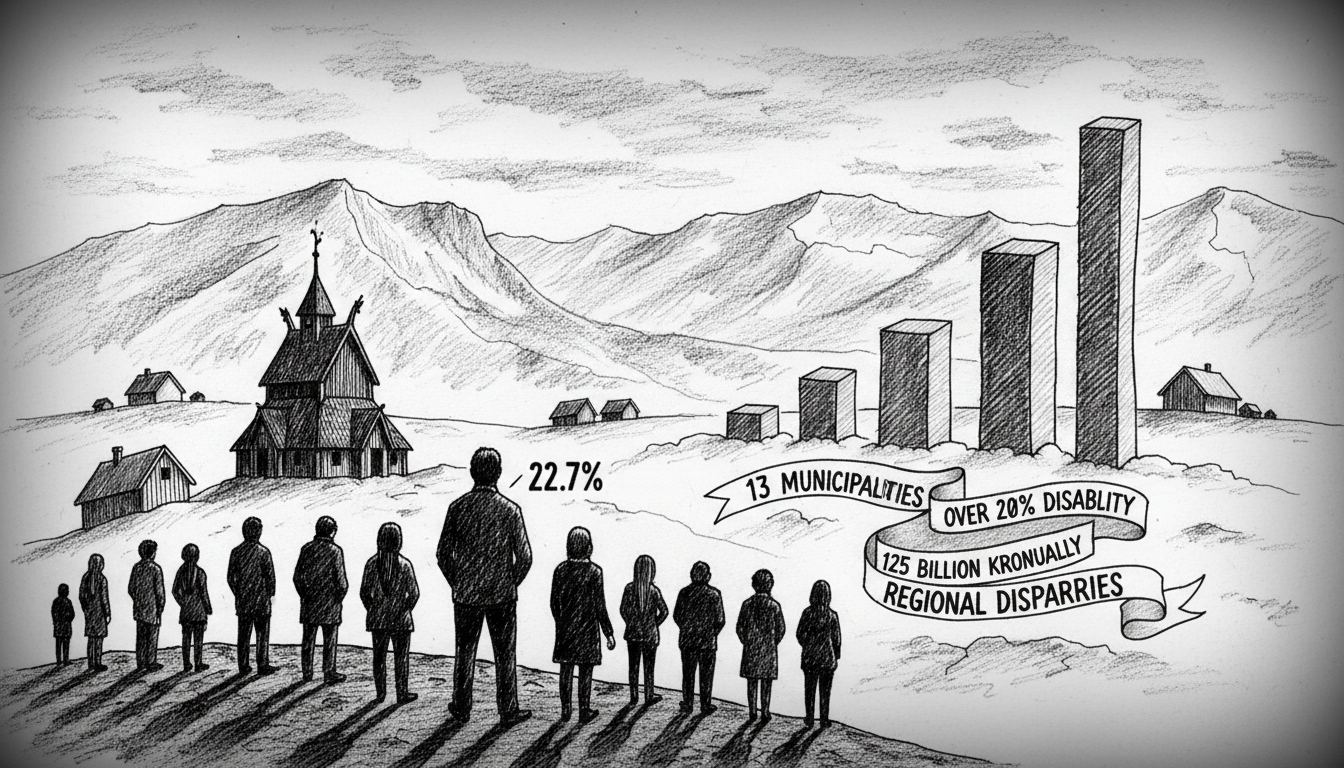More than half of Norway's municipalities have seen rising disability benefit rates in recent years. Thirteen municipalities now report over 20 percent of residents receiving disability pensions. This trend highlights significant regional disparities in health and employment across the Nordic nation.
Søndre Land municipality in Innlandet county tops the statistics with 22.7 percent disability rate. Mayor Roger Fløttum expressed deep concern about his community leading this troubling list. He emphasized the human impact behind these numbers in a recent statement.
These statistics represent real people with lives, dreams, and families, the mayor explained. The situation feels particularly personal in smaller communities where everyone knows each other, he added.
The affected municipalities span multiple regions. Two are located in Troms county, seven in Innlandet county, and four in Agder county. Following Søndre Land, Iveland municipality in Agder records 22.6 percent disability rate. Åsnes in Innlandet follows with 22.2 percent.
Other high-rate municipalities include Stor-Elvdal (21.7%), Våler (21.2%), and Nordre Land (21%). The list continues with Åmli (20.9%), Eidskog (20.9%), Gratangen (20.6%), and Dyrøy (20.5%). Grue (20.4%), Bygland (20.3%), and Gjerstad (20.2%) complete the thirteen municipalities exceeding the 20 percent threshold.
Norway's disability benefit system faces growing financial pressure. Annual payments are expected to surpass 125 billion kroner this year. This substantial expenditure reflects both demographic changes and economic challenges in regional communities.
The concentration in specific regions suggests structural economic issues beyond individual health problems. Many high-rate municipalities are rural areas experiencing population aging and limited employment opportunities. This pattern mirrors challenges seen in other Nordic welfare states balancing comprehensive social safety nets with sustainable public finances.
International readers should understand that Norway's disability benefits provide crucial economic security but also represent major government spending. The system aims to support those unable to work due to health conditions while maintaining dignity and social inclusion. These latest figures indicate where this social contract faces its greatest tests.
What explains such dramatic geographic variation? Local industry composition, healthcare access, and demographic profiles all contribute. Some municipalities historically depended on physically demanding industries like mining or forestry where work-related disabilities are more common. Others face brain drain as younger, healthier residents move to urban centers for education and employment.
The Norwegian welfare model remains robust overall but these municipal disparities reveal underlying stress points. Policy makers must address both the immediate needs of disabled citizens and the long-term sustainability of regional economies. Without intervention, these geographic inequalities may widen further.

